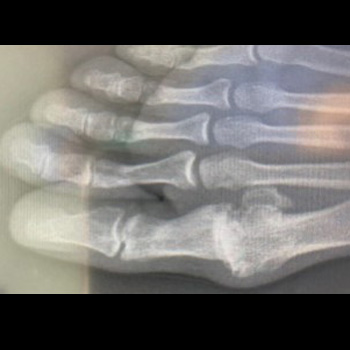Keywords
Retronychia, onychomycosis, onychomadesis, big toe, kinesio tape
Abstract
Background: In rare dermatology cases the differential diagnosis is challenging, e.g. when one nail is growing below another, the provisional diagnosis could be confusing. It may present as chronic paronychia, candidiasis, bacterial infections, rheumatoid arthritis, psoriasis, subungual tumours, or cysts.
Case description: We present a case of iatrogenic rupture of the nails of both big toes following a commonly known recommendation from physiotherapists in the initial stages of hallux valgus or chronic arthritis by using kinesio tape to prevent the big toe from fixation in the valgus position. The initial provisional diagnosis of retronychia was revised, and a final diagnosis of onychomadesis was made. The patient’s complaint was solved after around one year without any specific therapy.
Conclusion: The differential diagnosis for onychomadesis needs a careful and detailed history that may prevent a patient from a frightening diagnosis and painful, long-lasting treatments.
References











